Rurouni Kenshin (film)
7.8 /10 1 Votes7.8
Director Keishi Ohtomo Adapted from Rurouni Kenshin Duration | 7.6/10 IMDb Genre Action, Drama, History Film series Rurouni Kenshin | |||||||||||||||||||||||||||||||||
 | ||||||||||||||||||||||||||||||||||
Release date August 25, 2012 (2012-08-25) (Japan)October 4, 2013 (2013-10-04) (UK) Based on Rurouni Kenshin byNobuhiro Watsuki Cast (Kenshin Himura), (Kaoru Kamiya), Kôji Kikkawa (Udo Jine), Yu Aoi (Megumi Takani), (Sanosuke Sagara), Go Ayano (Gein)Characters Kenshin Himura (Takeru Satoh), Kamiya Kaoru (Emi Takei), Sagara Sanosuke (Munetaka Aoki), Takani Megumi (Yu Aoi), Myojin Yahiko (Taketo Tanaka) Similar movies The Ambush: Incident at Blood Pass , 13 Assassins , 47 Ronin , The Last Samurai , Kill Bill: Vol. 1 , Kill Bill: Vol. 2 Tagline The Journey Begins | ||||||||||||||||||||||||||||||||||
Rurouni Kenshin (Japanese: るろうに剣心, Hepburn: Rurōni Kenshin) (also known as Rurouni Kenshin: Origins in North America) is a 2012 Japanese film adaptation of the manga of the same name originally written by Nobuhiro Watsuki. Directed by Keishi Ōtomo, the film stars Takeru Satoh and Emi Takei. The film focuses on fictional events that take place during the early Meiji period in Japan, telling the story of a wanderer named Himura Kenshin, formerly known as the assassin Hitokiri Battōsai. After participating in the Bakumatsu war, Kenshin wanders the countryside of Japan offering protection and aid to those in need as atonement for the murders he once committed as an assassin.
Contents
- Rurouni kenshin the legend ends official trailer 2014 japanese live action movie hd
- Plot
- Cast
- Production
- Release
- Box office
- Critical reception
- Sequels
- References
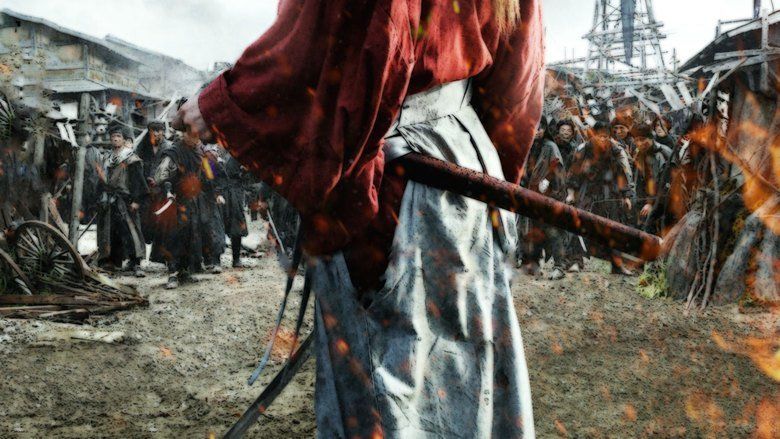
Rumors circulated of a live action adaptation of the manga before it was announced. The Sankei Sports newspaper adds that the staff aims to release the film internationally and eventually make a series. This will be the first live-action adaptation of the manga. During the production, Nobuhiro offered his ideas for the movie, which were used in the filming. The film was distributed internationally by Warner Bros.
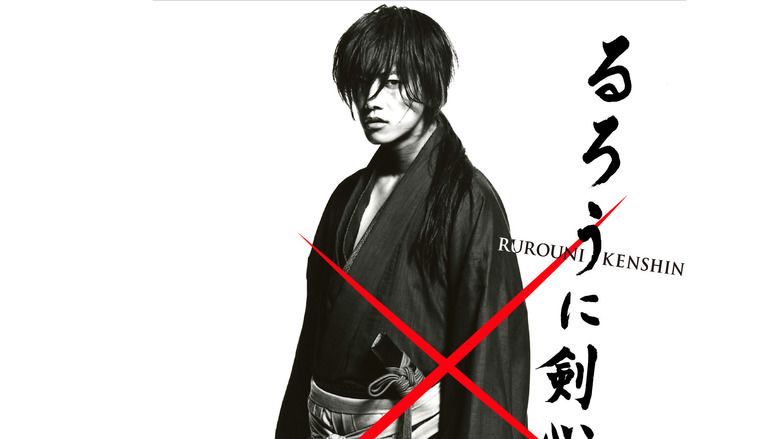
Rurouni Kenshin was theatrically released on August 25, 2012 in Japan, grossing over $36 million in that country and over $60 million worldwide as of November 2012. The film has been licensed for distribution in over 60 countries in Europe, Latin America and Asia. The movie premiered in North America as an opening selection for the 2012 LA EigaFest in December 14, 2012.
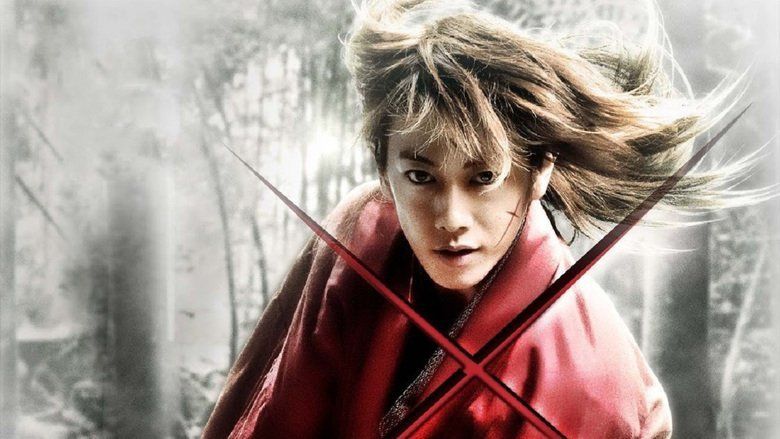
On June 14, 2016, Funimation Films announced that they acquired the rights to Rurouni Kenshin, as well as its sequels Kyoto Inferno and The Legend Ends. The film hit North American theatres in August 2016.
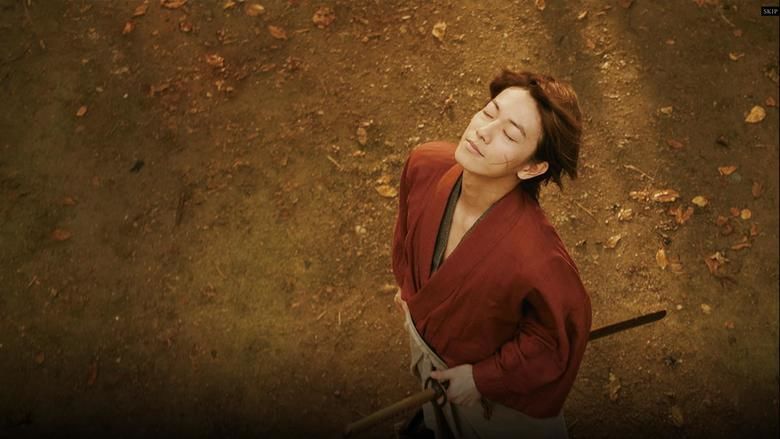
Rurouni kenshin the legend ends official trailer 2014 japanese live action movie hd
Plot

As the Imperialist forces celebrate their victory in the Battle of Toba-Fushimi, a participant known as Battōsai the Killsword walks away from the battlefield, abandoning his sword. But, the Battōsai's old katana is not left alone. It is claimed by one of the fallen, Udō Jin-e.
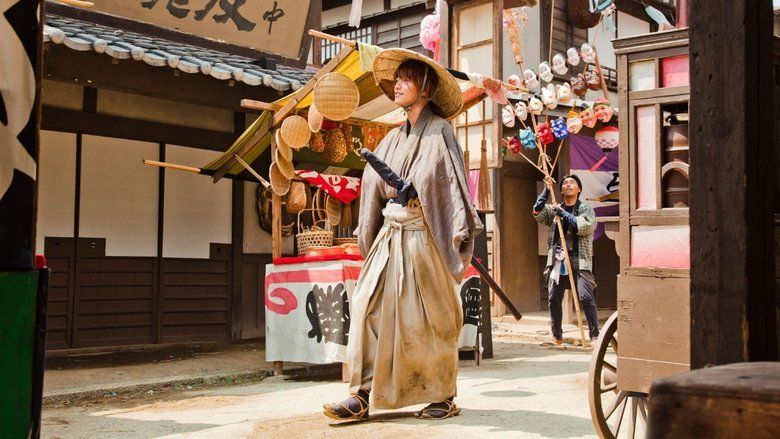
A decade later, Saitō Hajime and his fellow policemen investigate the murder of an undercover cop supposedly by the hands of the Battōsai. But Saitō is not convinced and suspects Takeda Kanryū, a wealthy, but cruel businessman. Meanwhile, the former Battōsai (now calling himself Himura Kenshin) arrives in Tokyo. While roaming its streets, he meets Kamiya Kaoru, the owner of her late father's Kendo school. With her dojo's name smeared by one bearing the name of Battōsai, she attacks him believing him to be the famed killer, but is proven wrong when Kenshin reveals he only carries a "reverse-blade sword" (逆刃刀, sakabatō).
Elsewhere, Takani Megumi, a woman forced to make opium for Takeda Kanryū, escapes and turns to the police for a safe haven after witnessing the deaths of the other opium makers. However, Udō Jin-e, under the service of Kanryū, hunts her down, slaying everyone in the police station. Luckily, she escapes in the ensuing chaos.
Kaoru crosses paths with Jin-e, the actual perpetrator killing under her dojo's style of swordsmanship. Utterly no match for him, she is injured in the fight, but Kenshin appears out of nowhere and saves her. Jin-e immediately realizes Kenshin's hidden identity as the true Battōsai, before a swarm of policemen rush onto the scene, giving Kenshin and Kaoru a chance to flee. Kaoru leads Kenshin to her dojo where they will be safe. Later, a group of thugs under Takeda Kanryū attempt to take over the dojo. Kenshin beats down the entire gang without killing a single one before the police arrive. Kenshin takes the blame for the incident and gets himself arrested in order to help avoid Kaoru's dojo being blamed for the violence. Soon, Saitō recognizes him and releases him. After his release, he is greeted by Kaoru who knows Kenshin is not the Battōsai who had defamed her dojo and takes him back to the dojo. Kenshin afterward moves in with Kaoru and her only student, the boy Myōjin Yahiko.
Still running on the streets for her life, Megumi runs into Yahiko who helps hide her and brings her to the dojo where she is introduced to everyone. Kaoru treats everyone to a sukiyaki dinner at the Akabeko restaurant, only to have the occasion spoiled by Kanryū coming and offering to hire Kenshin, who humbly declines. Here, he is challenged by Sagara Sanosuke for the job and they leave the establishment to fight.
Later that evening, Jin-e goes on a killing spree leaving many corpses for the police to find the following day. Kenshin witnesses the horror, as well as a woman mourning the death of her lover. This evokes a memory for Kenshin from his years as an assassin when he witnessed a woman mourning a man that he had killed, a sword fight that left a scar on his face. Later that night, a masked man working for Kanryū warns Megumi of coming dangers.
The next day the people around the dojo fall ill from rat poison contaminating the community wells. Megumi suspects it is Kanryū's doing and helps by providing medication for the victims. Angry at Kanryū, Megumi attempts to kill him, but fails and is instead held hostage by the wealthy drug-dealer. Besting all his men, Kenshin and Sanosuke attack Kanryū's mansion in hopes of rescuing Megumi. Saitō assists them to subdue Kanryū, who is armed with a Gatling gun. They rescue Megumi, but discover that Jin-e, the fake Battōsai and Kanryū's man, has kidnapped Kaoru.
Kenshin pursues Jin-e. To further provoke Kenshin, Jin-e uses a special technique that paralyzes Kaoru's lungs and can only be undone with his death. After an intense battle, Kenshin critically injures Jin-e by shattering his elbow with his scabbard. Before Kenshin could land the killing blow, Kaoru overcomes the paralysis and stops Kenshin from killing Jin-e. Jin-e commits suicide, telling Kenshin before his last breath that he who lives by the sword must die by the sword, a re-occurring theme, counter to Kenshin's vow never to kill again.
Kenshin, tired and wounded, carries the unconscious Kaoru back to the dojo. They rest, in the care of Megumi and Yahiko. Upon waking up, Kaoru does not see Kenshin and goes in search for him. She finds him carrying back some vegetables, and is relieved of her fear that he may have left permanently.
Cast
Principal cast list as presented on the Funimation Films website in Western name order:
Production
On June 28, 2011, a live-action film adaptation was announced. Produced by Warner Bros., with actual film production done by Studio Swan, the film was directed by Keishi Ōtomo and stars Takeru Satoh (of Kamen Rider Den-O fame) as Kenshin, Munetaka Aoki as Sanosuke Sagara and Emi Takei as Kaoru. Ōtomo said he aimed to make the live-action more complex than the original manga version. He also found Satoh as a good fit for Kenshin's character after the two worked together in a previous film. The film was released on August 25, 2012, and the staff "aims to release the film internationally and eventually make a series.
After choosing Takeru Satoh as the lead, Producer Shinzō Matsuhashi commented, "Satoh has the looks and stature to be a proper Kenshin." Watsuki added that when this project was just starting, he and his wife were discussing who should play Kenshin, and decided that Satoh topped the list.
Satoh later commented, “The role of Kenshin is that of a well-known character, therefore, I think fascinating acting is needed. I would like to create the Kenshin image with the staff, while staying true to the details. I will try my best, so please look forward to it.”
Nobuhiro Watsuki praised on Satoh being cast for the role: “When this project just started, my wife and I were talking about who would suit the role of Kenshin, and Satoh Takeru-san was the one who came up on our mind first. So, when it was confirmed (that Satoh will be taking the role), I was surprised, but was also very happy. I’m looking forward to seeing his wonderful acting.”
Release
Rurouni Kenshin was theatrically released on August 25, 2012 in Japan. The film was released in South Korea for the Busan International Film Festival on October 5, 2012. Released for Spain in the annual Sitges Film Festival on October 10, 2012. The film debuted in Hong Kong on December 6, 2012. It was also theatrically released in the Philippines on December 5, 2012 (SM Cinema) gaining second place in the Philippine Box Office on its first week.
It was released in DVD on December 26, 2012. The film has been licensed for distribution in over 60 countries in Europe, Latin America and Asia. Limited edition came in a special box, with special digipack, a soundtrack, and a Rurouni Kenshin notebook. Other content also include cast and staff commentary, TV spots, behind-the-scenes, and all the trailers included, plus One OK Rock's PV of their song "The Beginning".
The film was released in North America in December 14, 2012 for the LA EigaFest 2012 and was held in conjunction with the American Cinematheque at the Egyptian Theatre in Hollywood. The director, Keishi Ōtomo, attended the premiere and opening red carpet ceremony. In addition to Rurouni Kenshin, the 2012 line up features some of the films to come out of Japan over the last year. A special screening of four selected short films will be presented in collaboration with the Short Shorts Film Festival & Asia.
The film was screened in the UK at October 4, 2013.
The film was released on Blu-ray and DVD by Funimation on November 1, 2016 in North America under the title Rurouni Kenshin: Origins, which includes an English dubbed version of the film. Funimation also gave the film a TV-MA rating.
Box office
The film has performed extremely well, earning $36,798,585 in Japan in its debut and US$25 million in a limited international release, for a total gross of US$61.7 million. The film garnered to become Japan's sixteenth highest-grossing film of the year.
Critical reception
The film received positive reviews from critics. Deborah Young from The Hollywood Reporter praised the film in the Busan Film Festival, saying that the "choreography is fast and furious and the sword fights ably showcase Battosai's incredible skills. Naoki Satō energetic score pounds out the action scenes to a barbarian beat." Michelle Nguyen of Geek.com praised the film as well, stating that "Rurouni Kenshin: Origins treats the source material with respect and love. This film is many things: part Japanese historical drama, part action movie, and part nostalgic emotional journey." and goes on to say "More than just nostalgia, seeing Rurouni Kenshin in the flesh is a profound coming-to-Jesus like experience for fans of the franchise and newcomers alike. We have at last a film that shows what a live action adaptation of an anime should be like. Rurouni Kenshin bursts forth on the screen with heart and with sword, just as his name implies."
Nick Creamer of Anime News Network awarded the film an "A-", stating that "Kenshin: Origins smartly leans on one of the source material's great advantages: the inherently compelling nature of the transition from the Tokugawa to the Meiji era. Much of the film's thematic and emotional power comes from the poignancy of that transition – more than just a tale of samurai clashes, it presents an argument for both the great and terrible sides of both eras —" and goes on to say "Overall, I'd highly recommend Rurouni Kenshin: Origins to both fans of the original and fans of adventure films in general. Origins is action-packed, full of striking characters, and energetically composed, while also drawing smartly on the poignant context of its source material. It's an altogether terrific time." Nobuhiro Watsuki overall praised the film. During an interview with Weekly Shonen Jump Alpha, he commented, "It was right on! Takeru Satoh played Kenshin’s dual personality well. He truly was Kenshin. Yosuke Eguchi who played Saitō Hajime, Koji Kikkawa who played Udō Jin-e, and Munetaka Aoki who played Sagara Sanosuke really took on their characters’ expressions and movements in the action sequences. It drew me in, especially the scene with Saitō’s Gatotsu pose. It sent chills down my spine! I thought Emi Takei playing Kamiya Kaoru was really cute and Yu Aoi playing Takani Megumi was also fantastic, and in the film parts I felt I didn’t explain well enough in the manga were improved. There were actually lines in the movie that made me think 'I want to use that line in the manga!'"
Sequels
When the film was first announced, it was reported that the production team had hopes to create a series.
The August 2013 issue of Jump SQ. announced that a two-part sequel will be released simultaneously for the summer of 2014. These movies were tentatively known as Rurouni Kenshin: The Great Kyoto Fire Arc and The Last of a Legend Arc, and have Satoh Takeru, Takei Emi and Eguchi Yosuke reprising their roles as Kenshin, Kaoru and Saitō respectively. It was announced that Tatsuya Fujiwara was cast in the role of Shishio Makoto on July 2, as was director Keishi Ōtomo's return. On July 30, it was revealed that Ryunosuke Kamiki and Yūsuke Iseya were cast as Seta Sōjirō and Shinomori Aoshi. On August 4, 2013, actors Min Tanaka, Kazufumi Miyazawa, Yukiyoshi Ozawa, Maryjun Takahashi and Ryosuke Miura were unveiled as Nenji Kashiwazaki/Okina, Toshimichi Ōkubo, Hirobumi Itō, Yumi Komagata and Chō Sawagejō. Kaito Ōyagi has replaced Taketo Tanaka as Yahiko. On August 30, 2013, Tao Tsuchiya was announced as popular character Makimachi Misao. On September 20, 2013, executive producer Hiroyoshi Koiwai revealed that model Lisa Ulliel is cast in a secret role.
References
Rurouni Kenshin (film) WikipediaRurouni Kenshin (film) IMDb Rurouni Kenshin (film) themoviedb.org
